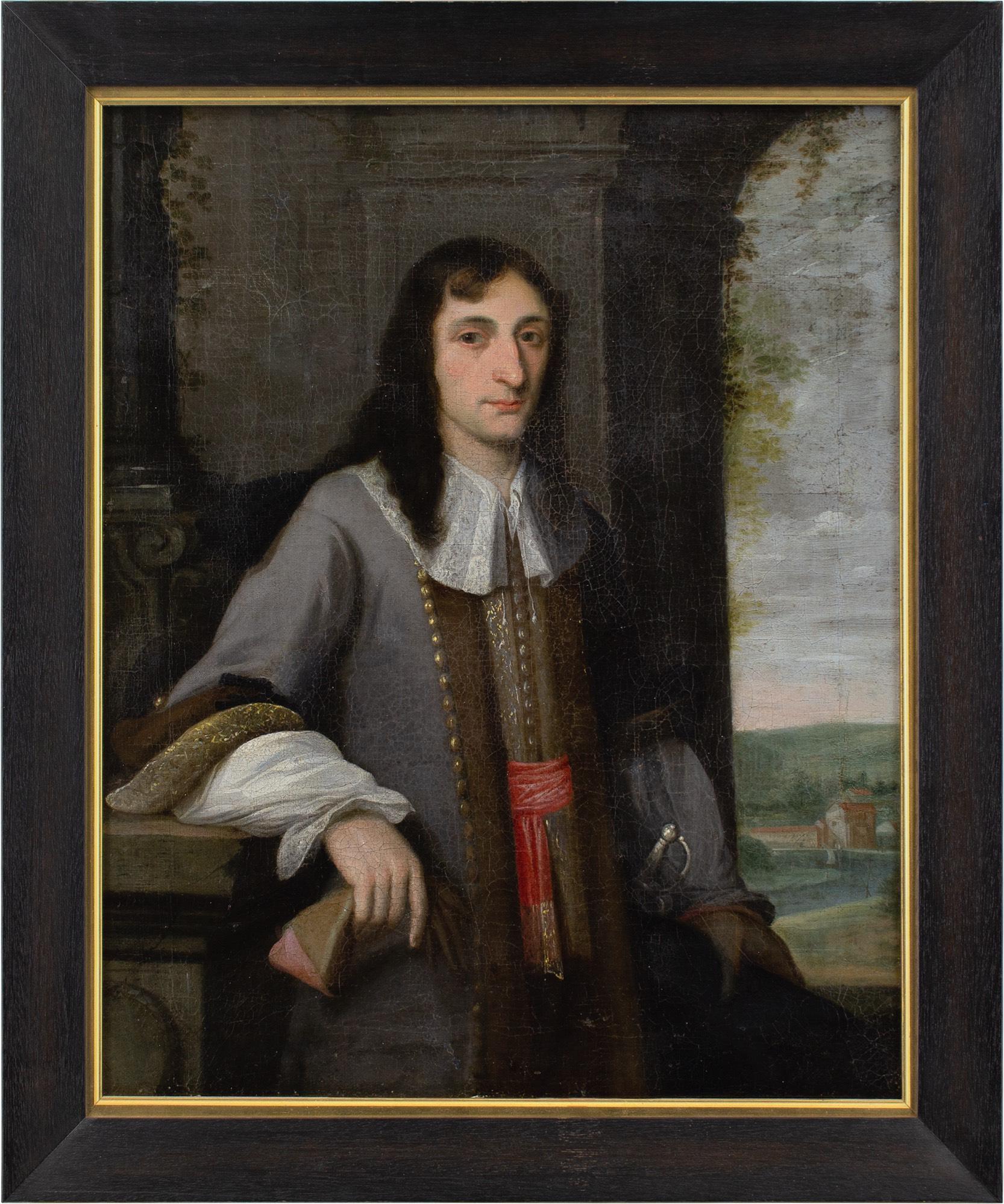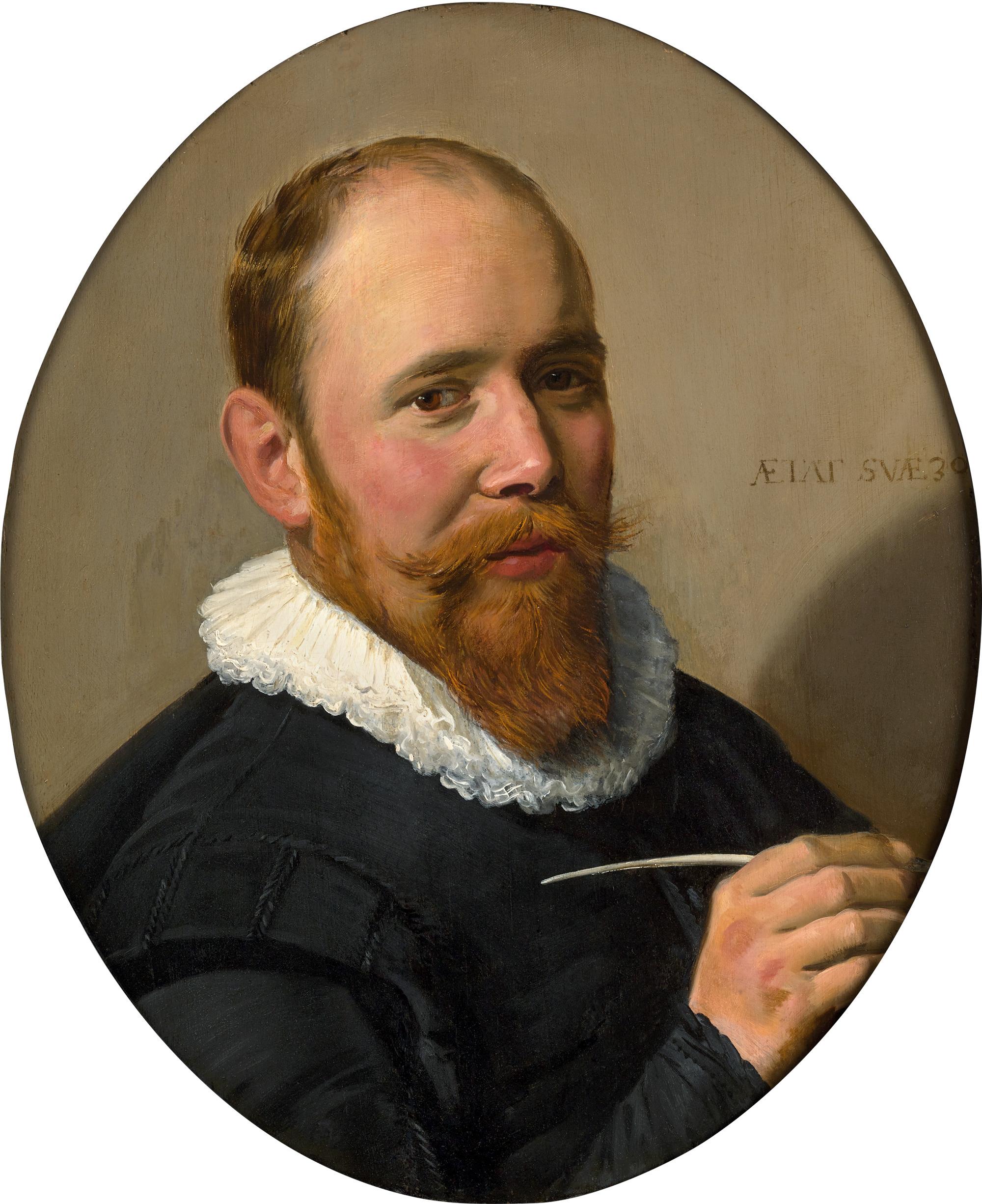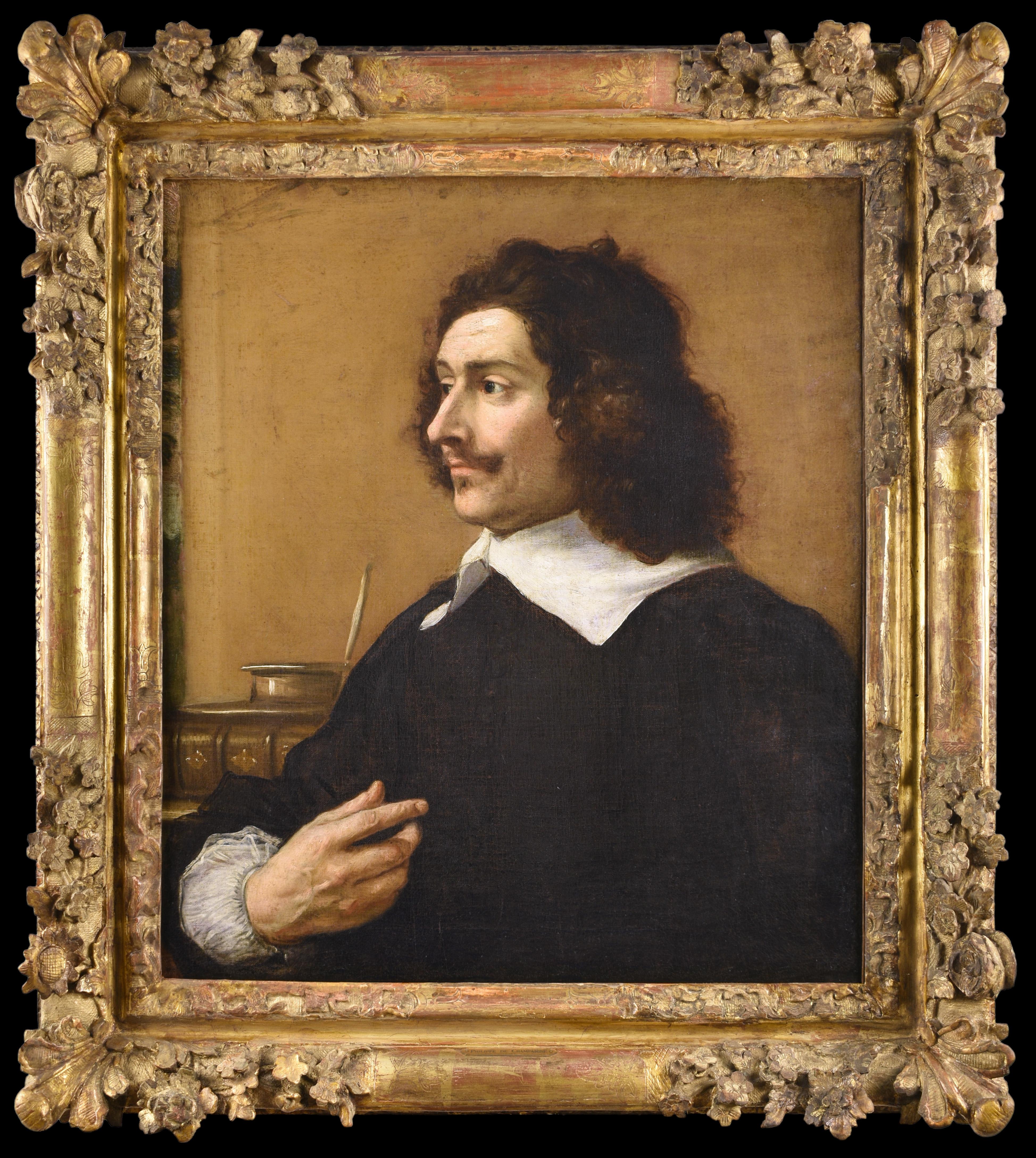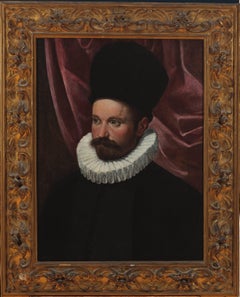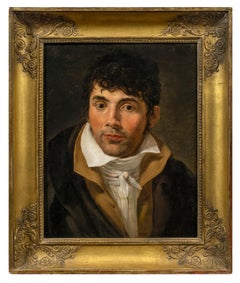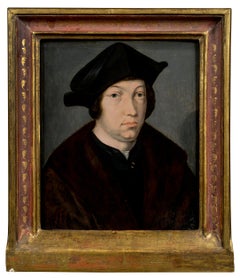Items Similar to Portrait of an Artist (possibly a Self-Portrait)
Want more images or videos?
Request additional images or videos from the seller
1 of 5
Huybrecht BeuckelaerPortrait of an Artist (possibly a Self-Portrait)c. 1566
c. 1566
$82,000
£61,964.69
€71,554.02
CA$114,582.62
A$127,139.07
CHF 66,598.18
MX$1,559,066.33
NOK 847,105.92
SEK 799,631.86
DKK 533,623.20
Shipping
Retrieving quote...The 1stDibs Promise:
Authenticity Guarantee,
Money-Back Guarantee,
24-Hour Cancellation
About the Item
Provenance:
Bradley Collection.
Private Collection, Upperville, Virginia.
Literature:
Katlijne van der Stighelen and Hans Vlieghe, Rubens: Portraits of Unidentified and Newly Identified Sitters painted in Antwerp, Corpus Rubenianum Ludwig Burchard, vol. 19, pt. 3, London and Turnhout, 2021, under cat. no. 189, p. 161, and fig. 75.
This painting had previously been considered to be by an anonymous Tuscan painter of the sixteenth century in the orbit of Agnolo Bronzino. While the painting does in fact demonstrate a striking formal and compositional similarity to Bronzino’s portraits—compare the nearly identical pose of Bronzino’s Portrait of a Young Man in the Metropolitan Museum of Art (Fig. 1)—its style is completely foreign to Italian works of the period. That it is painted on an oak panel is further indication of its non-Italian origin.
This portrait can in fact be confidently attributed to the Antwerp artist Huybrecht Beuckelaer. Huybrecht, the brother of Joachim Beuckelaer, has only recently been identified as the author of a distinct body of work formerly grouped under the name of the “Monogrammist HB.” In recent studies by Kreidl, Wolters, and Bruyn his remarkable career has been delineated: from its beginnings with Joachim in the workshop of Pieter Aertsen; to his evident travels to Italy where, it has been suggested, he came into contact with Bronzino’s paintings; to his return to Antwerp, where he seems to have assisted Anthonis Mor in painting costume in portraits; to his independent work in Antwerp (where he entered the Guild of Saint Luke in 1579); and, later to his career in England where, known as “Master Hubberd,” he was patronized by the Earl of Leicester. Our painting was recently published by Dr. Katlijne van der Stighelen and Dr. Hans Vlieghe in a volume of the Corpus Rubenianum, in which they write that the painting “has a very Italian air about it and fits convincingly within [Beuckelaer’s] oeuvre.” Stighelen and Vlieghe compare the painting with Peter Paul Ruben’s early Portrait of a Man, Possibly an Architect or Geographer in the Metropolitan Museum of Art, in which the sitter holds a compass and wears a similarly styled doublet (Fig. 2).
Huybrecht both outlived and travelled further afield than his brother Joachim, who made his career primarily in Antwerp. Whereas Joachim was the main artistic inheritor of their uncle and teacher, Pieter Aertson, working in similar style and format as a specialist in large-scale genre and still-life paintings, Huybrecht clearly specialized as a painter of portraits and was greatly influenced by the foreign artists and works he encountered on his travels. His peripatetic life and his distinctly individual hand undoubtedly contributed to the fact his career and artistic output have only recently been rediscovered and reconstructed. His periods abroad seem to have overlapped with the mature phase of his brother Joachim’s career, who enrolled in the Antwerp Guild of Saint Luke much earlier than his brother, establishing himself as an independent painter in 1560. Joachim’s activity was confined to the following decade and half, and his latest work dates from the last year of his life, 1574. Our portrait was likely produced in the late 1560s, a dating supported by the dendrochronological investigation performed by Dr. Peter Klein, which established that it is painted on an oak panel with an earliest felling date of 1558 and with a fabrication date of ca. 1566.
This painting presents a portrait of an artist, almost certainly Huybrecht’s self-portrait. The young sitter is confidently posed in a striking patterned white doublet with a wide collar and an abundance of buttons. He stands with his right arm akimbo, his exaggerated hands both a trademark of Huybrecht and his brother Joachim’s art, as well as a possible reference to the “hand of the artist.” The figure peers out of the painting, interacting intimately and directly with the viewer, as we witness him posed in an interior, the tools and results of his craft visible nearby. He holds a square or ruler in his left hand, while a drawing compass lays on the green cloth, protruding off the edge of the table. Behind the table at right, a section of a painted canvas depicting an angel holding a trumpet lurks in shadows. Interestingly, in comparison to the formal and precise rendering of the figure and still-life elements, the vignette in the upper right—a landscape viewed through an open window—is treated in a very broad and painterly manner, undoubtedly intended to show off the artist’s skill as a painter of landscapes. The view, which somewhat resembles and foreshadows the experimental landscapes of Hercules Seghers, includes a solitary figure shown drawing the landscape—a probable second self-portrait within the painting.
The core of Huybrecht’s oeuvre has been established through his signed (“HB”) paintings: the Prodigal Son Feasting with Harlots and The Kitchen Maid with Helpers (both in the Musées Royaux de Beaux Arts, Brussels), and The First Passover Feast of 1563 (formerly art market, New York). To these art historians have added others on the basis of style, including several portraits, to which the present work closely conforms. A group of portraits vaguely considered to be by one or another painter in the circle of Bronzino, but clearly of Northern origin, would seem as well to be by the artist (such as the Portrait of a Lady, sometimes given to Santi di Tito, in the Statens Museum, Copenhagen).
- Creator:Huybrecht Beuckelaer (Flemish)
- Creation Year:c. 1566
- Dimensions:Height: 28 in (71.12 cm)Width: 22 in (55.88 cm)
- Medium:
- Movement & Style:
- Period:
- Condition:
- Gallery Location:New York, NY
- Reference Number:1stDibs: LU10212222212

About the Seller
5.0
Recognized Seller
These prestigious sellers are industry leaders and represent the highest echelon for item quality and design.
Established in 1997
1stDibs seller since 2012
21 sales on 1stDibs
Typical response time: 12 hours
- ShippingRetrieving quote...Shipping from: New York, NY
- Return Policy
Authenticity Guarantee
In the unlikely event there’s an issue with an item’s authenticity, contact us within 1 year for a full refund. DetailsMoney-Back Guarantee
If your item is not as described, is damaged in transit, or does not arrive, contact us within 7 days for a full refund. Details24-Hour Cancellation
You have a 24-hour grace period in which to reconsider your purchase, with no questions asked.Vetted Professional Sellers
Our world-class sellers must adhere to strict standards for service and quality, maintaining the integrity of our listings.Price-Match Guarantee
If you find that a seller listed the same item for a lower price elsewhere, we’ll match it.Trusted Global Delivery
Our best-in-class carrier network provides specialized shipping options worldwide, including custom delivery.More From This Seller
View AllPortrait of a Gentleman
By Ippolito Scarsella (Scarsellino)
Located in New York, NY
Provenance: Suida-Manning Collection, New York
Private Collection
Exhibited: Venetian Paintings of the Sixteenth Century, Finch College Museum of Art, New York, October 30-December 15, 1963, no. 31.
Veronese & His Studio in North American Collections, Birmingham Museum of Art, Oct. 1-Nov. 15, 1972, and Montgomery Museum of Fine Arts, Dec. 5-Dec. 31, 1972
Literature: Robert L. Manning, A Loan Exhibition of Venetian Paintings of the Sixteenth Century, exh. cat. New York 1963, cat. no. 31ill., as by Veronese
Stephen Clayton and Edward Weeks, eds., introduction by David Rosand, Veronese & His Studio in North American Collections, Birmingham 1972, as by Veronese, p. 38 ill.
Terisio Pignatti, Veronese, Venice 1976, I, p. 199, cat. no. A225, II, fig. 908, as attributed to Veronese
Terisio Pignatti and Filippo Pedrocco, Veronese; catalogo completo dei dipinti, Florence 1991, no. 54°, as attributed to Veronese.
Terisio Pignatti and Filippo Pedrocco, Veronese, Milan 1995, II, pp. 517-518ill., cat. no. A 56, under attributed paintings, by Veronese and workshop)
John Garton, Grace and Grandeur; The Portraiture of Paolo Veronese, London-Turnhout 2008, p. 237, fig. 77, cat. no. R16, as workshop of Veronese.
Scarsellino’s art is widely regarded as critical link between the Renaissance and the Baroque styles in Emilian painting; not only was he an important transmitter of the heritage of the Renaissance, but he was also open to innovative ideas, and was one of the earliest to experiment with the trend to naturalism that would become fundamental to art of the new century. Born around 1550, he received his earliest training from his father Sigismondo, an architect and painter; it was probably while working at his father’s side as a youth that he acquired the nickname Scarsellino, or “little Scarsella”. After absorbing the principles of his art in Ferrara and Parma, he went to Venice in 1570, staying for four years and working in the shop of Veronese. In the following decade, his art —especially in terms of its piety and its development of landscape— demonstrates a strong sympathy with that of the Carracci, with whom he worked in 1592-1593 at the Palazzo dei Diamanti in Ferrara. Maria Angela Novelli and later Alessandra Frabetti both propose that Scarsellino traveled to Rome, although such a trip has not been documented; if he did travel to Rome, it probably would have occurred during the years that Scarsellino’s colleagues Agostino and Annibale Carracci were there, that is, beginning in 1595 and until 1609. The last decades of Scarsellino’s career again involve stylistic experimentation, this time in a manner that would bring his work very close to the progressive figurative naturalism of Carlo Bononi and prepare the way for Guercino.
The present portrait of a distinguished gentleman had been long thought to be by Paolo Veronese and was in fact attributed to him by such distinguished connoisseurs as Adolfo Venturi and Wilhelm Suida. The portrait’s style is, however, distinct from Veronese’s, although clearly indebted to it, and the attribution to the young Scarsellino is wholly convincing. The painting would then date from the 1570s – a date confirmed by the costume the subject wears. The puffed hat that appears in the painting had a rather short-lived vogue in the early 1570s. One sees it in Giambattista Moroni’s Portrait of Count...
Category
18th Century and Earlier Baroque Portrait Paintings
Materials
Canvas, Oil
Portrait of a Gentleman
Located in New York, NY
Circle of Jacques-Louis David
(French, 18th Century)
Provenance:
Private Collection, Buenos Aires
Exhibited:
“Art of Collecting,” Flint Institute of Art, Flint, Michigan, 23 November 2018 – 6 January 2019.
This vibrant portrait of young man was traditionally considered a work by Jacques-Louis David, whose style it recalls, but to whom it cannot be convincingly attributed. Rather, it would appear to be by a painter in his immediate following—an artist likely working in France in the first decade of the nineteenth century. Several names have been proposed as the portrait’s author: François Gérard, Louis Hersent, Anne-Louis Girodet (Fig. 1), Theodore Gericault, and Jean-Baptiste Wicar, among others. Some have thought the artist Italian, and have proposed Andrea Appiani, Gaspare Landi...
Category
18th Century Old Masters Paintings
Materials
Canvas, Oil
$45,000
Portrait of a Man
Located in New York, NY
Provenance:
with Leo Blumenreich and Julius Böhler, Munich, 1924
Dr. Frederic Goldstein Oppenheimer (1881-1963), San Antonio, Texas; by whom given to:
Abraham M. Adler, New York, until 1985; thence by descent to the present owners
While old inscriptions on the verso of this panel propose its author to be Hans Holbein and the sitter Sir John More—a lawyer, judge, and the father of Sir Thomas More—this fine portrait has long been recognized to be by a Flemish hand. Max Friedländer gave the painting to Bernard van Orley (1487/1491 – 1541) in 1924, but did not include it in the volume dedicated to the artist in his Early Netherlandish Paintings...
Category
16th Century Old Masters Portrait Paintings
Materials
Oil, Panel
$52,500
Portrait of a Bewigged Gentleman
By Vittore Ghislandi
Located in New York, NY
Vittore Ghislandi, called Fra Galgario
Provenance:
Robert L. and Bertina Suida Manning, New York, ca. 1966-1996
Private Collection, USA
Exhibited:
“Eighteenth Century European Pai...
Category
18th Century Baroque Paintings
Materials
Copper
Portrait of George and Edward Finch-Hatton in Van Dyck Dress
By David Martin
Located in New York, NY
Appointed Portrait Painter to the Prince of Wales in Scotland in 1785, David Martin was the leading Scottish portrait painter of his generation. The artist is best known in the United States for his portrait of Benjamin Franklin, which is in the White House collection, Washington, D.C. The sitters depicted in this double portrait were the sons of the British diplomat Edward Finch-Hatton. George (1747-1823), later of Eastwell Park, Kent, is shown seated, reading an ancient charter or medieval manuscript...
Category
18th Century and Earlier Paintings
Materials
Canvas, Oil
A Wolf
Located in New York, NY
Provenance:
The Marchesi Strozzi, Palazzo Strozzi, Florence
Sale, Christie’s, London, May 20, 1993, lot 315, as by Carl Borromaus Andreas Ruthart...
Category
17th Century Old Masters Animal Paintings
Materials
Canvas, Paper, Oil
You May Also Like
Portrait of a Young Gentleman - Dutch Old Master 17thC art portrait oil painting
Located in London, GB
This superb Dutch Old Master portrait oil painting is attributed as by a follower of Dutch 17th century artist Gerrard van Honthorst. The original of this painting hangs in Wilton House, Wiltshire, home to the 18th Earl and Countess of Pembrokeshire. The painting was previously attributed to Van Dyck by early cataloguers, but after exhaustive comparisons with the two Honthorst brothers' works, it was concluded that Gerrard van Honthorst was the artist who painted the original in Wilton House. Our painting was painted circa 1695 by a follower of Gerrard Honthorst. It was sold to us as circle of Cornelius Johnson.
The sitter is Prince Rupert of the Rhine, Duke of Cumberland, Earl of Holderness (1619-1682). He was an English army officer, admiral, scientist, and colonial governor. He first came to prominence as a Royalist cavalry commander during the English Civil War. Rupert was the third son of the German...
Category
1650s Old Masters Portrait Paintings
Materials
Oil
17th-Century Flemish School, Portrait Of A Gentleman In A Justaucorps
Located in Cheltenham, GB
This fine late 17th-century Flemish portrait depicts a distinguished gentleman wearing a justaucorps, black cloak, white shirt, vest, leather gloves, and breeches. He’s carrying a wi...
Category
1670s Old Masters Portrait Paintings
Materials
Oil, Canvas
Portrait of a Young Man - 17th Century Portrait in Oil
By Pieter Harmensz Verelst
Located in London, GB
Circle of Pieter Harmensz Verelst
1618 - 1678
Portrait of a Young Man
Oil on oak panel
Image size: 7 ½ x 5 ¾ inches
Dutch ripple frame
Category
18th Century and Earlier Old Masters Portrait Paintings
Materials
Oil, Panel
Portrait Of A Gentleman By Frans Hals
Located in New Orleans, LA
Frans Hals
1582-1666 Dutch
Portrait of a Gentleman
(possibly Theodore Blevet)
Oil on panel
“Frans Hals is a colourist among the colourists...Frans Hals must have had twenty-seven blacks...
Category
17th Century Old Masters Portrait Paintings
Materials
Oil, Panel
Price Upon Request
Portrait of a Nobleman, French School 17th Century
Located in New York, NY
French portrait of a nobleman, 17th Century, great condition. With a beautiful carved wooden frame.
Category
17th Century Baroque Portrait Paintings
Materials
Canvas, Oil
Soldier in an Interior, Early 17th Century Dutch Oil
Located in London, GB
Pieter Symonsz Potter
Dutch 1600 - 1652
Soldier in an Interior
Oil on oak panel, red seal to reverse
Image size: 15 x 10 3/4 inches
Dutch Ebonised frame
Bathed in a well lit roo...
Category
Early 17th Century Old Masters Portrait Paintings
Materials
Oil, Board
More Ways To Browse
Antique Paintings Peter Paul Rubens
Old Master Drawing 16th
Fig Still Life
Lady Figure Table
Antique Lay Figure
Hans Peter Craft
Antique Compass London
Antique Collar Buttons
Earl Klein
Cat Collar
Antique Architect Tools
Angel Trumpet
Trumpeting Angel
The Prodigal Son
Prodigal Son Painting
Peter Bradley
Architect Ruler
Ludwig Klein

